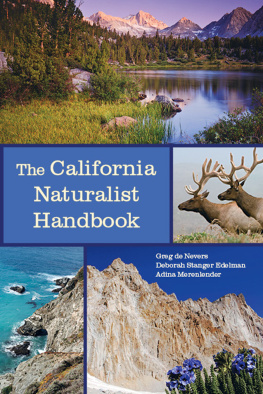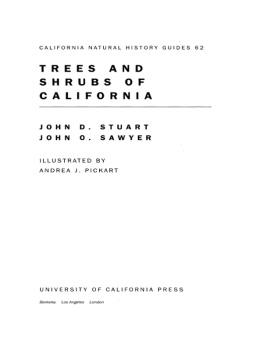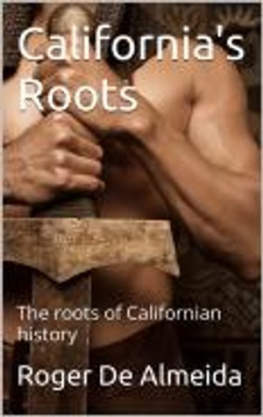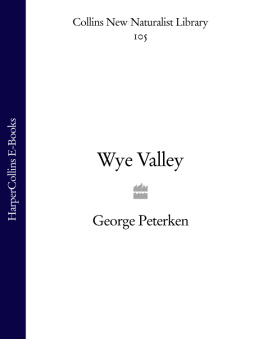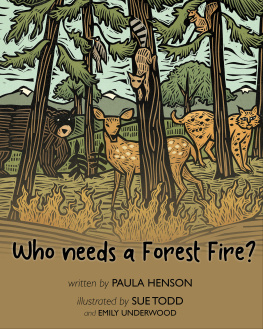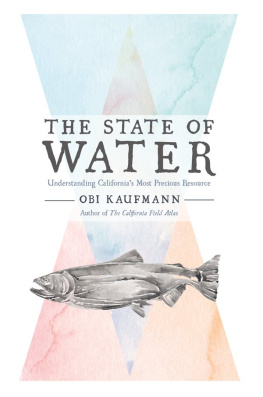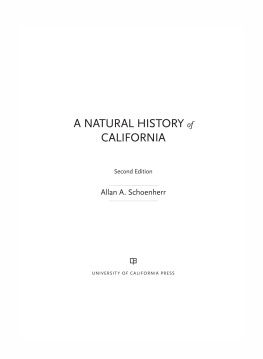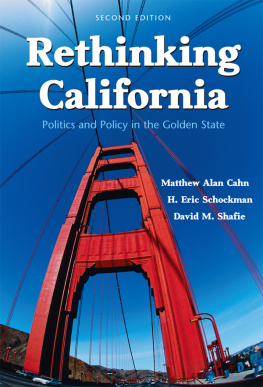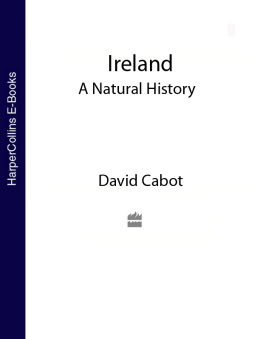
Praise for The California Naturalist Handbook
Everyone interested in creating a sustainable society should have a copy of The California Naturalist Handbook .
Paul R. Ehrlich, coauthor of The Dominant Animal
As the stewards of our planet, now more than ever, we need to be aware of our own effects upon the natural world. I applaud this book for leading Californians in a resurgence of natural history for the twenty-first century.
Todd Keeler-Wolf, coauthor of The Manual of California Vegetation
The California Naturalist Handbook helps build essential naturalist skills. Whether you are a student preparing yourself for a professional career in natural science or a self-taught nature enthusiast, this book will help you look deeper, see more, understand what you find, and ask more profound questions as you explore California.
John Muir Laws, author of The Laws Guide to the Sierra Nevada
As an instructor, I think this handbook is a wonderful reference tool to use in class or in the field. My students and I really appreciated the tips at the end of each chapter that give you opportunities to explore nature. To be honest, I used these sections to help plan field trips! This book reminds students of what makes California a brilliant place to explore and experience nature.
Ann Wasser, Pacific Grove Natural History Museum
The California Naturalist Handbook is the new, go-to reference for any question about the nature of the state, its energy resources, land management, and environmental concerns. Not only should a copy ride in the backpack of every naturalist, science teacher, and student, but the crucial information within must be consumed and passed along!
Rich Stallcup, author of California Travelers
Guidebook Birds of California
This is a dangerous book. If you start reading it, you may find yourself having the uncontrollable desire to study the insects in your backyard, examine the rocks in a local roadcut, or look for frogs along a mountain stream. This book tells you how to do such things in a clear, no-nonsense fashion. It will enable you to explain what you see to your friends and family, even if they are at first reluctant to hear you.
Peter Moyle, author of Fishes: An Enthusiasts Guide
This handbook celebrates the states natural heritage and will guide the budding naturalist to develop valuable skillsseeing what is really there, documenting those observations, and understanding natures interconnectedness. As the reader becomes tethered more intimately to the natural world, his or her increased ecological literacy will broaden natures constituency, providing a critical link to our future well-being.
Jules Evens, author of Introduction to California Birdlife
This handbook provides any prospective natural history interpreter with an excellent summary of the unique natural diversity of the state. Its designed to foster life-long learning, sharing of information, and taking action to protect the environment. I highly recommend this handbook to any organization developing a natural resources interpretive program or to anyone desiring a good summary of Californias natural history.
Stephen Barnhart, Academic Director, Pepperwood Preserve
The California Naturalist Handbook
The California
Naturalist Handbook
Greg de Nevers
Deborah Stanger Edelman
Adina M. Merenlender

UNIVERSITY OF CALIFORNIA PRESS
BerkeleyLos AngelesLondon
University of California Press, one of the most distinguished university presses in the United States, enriches lives around the world by advancing scholarship in the humanities, social sciences, and natural sciences. Its activities are supported by the UC Press Foundation and by philanthropic contributions from individuals and institutions. For more information, visit www.ucpress.edu.
University of California Press
Berkeley and Los Angeles, California
University of California Press, Ltd.
London, England
2013 by The Regents of the University of California
Excerpt from Lucy Smith, page 10, from The Way We Lived: California Indian Stories, Songs & Reminiscences , Malcolm Margolin, ed. Berkeley, CA: Heyday Books and the California Historical Society, 1993.
Cataloging-in-Publication Data for this title is on file with the Library of Congress.
ISBN 978-0-520-27480-8
eISBN: 9780520954618
Manufactured in the United States
22 21 20 19 18 17 16 15 14 13
10 9 8 7 6 5 4 3 2 1
The paper used in this publication meets the minimum requirements of ANSI / NISO Z 39.48-1992 ( R 2002) ( Permanence of Paper ). ()
For all those who have looked at
a bird, a bug, or a seed and wondered
may the tradition continue.
Contents
Acknowledgments
The initial development of this handbook and the UC California Naturalist Program was funded in part by the Wildlife Conservation Board and the University of Californias Renewable Resources Extension Program. We extend heartfelt thanks to Steve Barnhart, Michael (Shawn) Brumbaugh, Rebecca Perlroth, and others from the Pepperwood Preserve and Santa Rosa Junior College for their collaboration in piloting the program and providing essential feedback about this handbook.
The authors would like to thank the following people for their contributions: Doug McCreary for contributing to the forest chapter, Matt Deitch for contributing to the water chapter, Rebecca Perlroth for additional text on geology, Carol Blaney for adding to the interpretation chapter, M. Kat Anderson for text about Native Americans, Greg Giusti for text on the Redwood Forest Foundation, Mary Ellen Hannibal for the sea otter sidebar, and David Grantz for contributing the air quality section. Thanks also to Rob Blair and Amy Rager of the Minnesota Master Naturalist program, who were so generous in sharing their time, materials, and lessons learned. In addition, we would like to thank the following people for their help in reviewing and contributing to the draft document: Heidi Ballard, Jamie Bartolome, Steve Cardimona, Katie Hardy, Steve Lautze, Brianna McGonagle, Prahlada Papper, Mari Rodin, and Bill Tieje. Thank you to Kerry Heise and Greg Damron for sharing your beautiful photos and to Shane Feirer, Bill Heise, Geri Hulse-Stephens, and Susan Stanger for help with illustrations. We appreciate Jim Nosera and JT Williams for their goodnatured willingness to help with so many aspects of getting this book to press.
Thanks to Louise Doucette, whose edits vastly improved the readability of the text, and to David Peattie of BookMatters for his guidance on production, as well as the entire UC Press team for working so hard with us on this project: Stacy Eisenstark, Hannah Love, Francisco Reinking, and Kim Robinson. Special thanks to Chuck Crumly for his early support of this book.
The work that went into this book spanned several years and we could not have found our way without the support of our families. Greg de Nevers thanks Maggie and David Cavagnaro for teaching him the power and joy of a dissecting microscope, for answering his questions with more questions, and for showing him a vision of how wild and free life can be. Susan, Orion, and Sequoya you are the joy of my life. Deborah Stanger Edelman would like to thank Reid, Eli, and Noah for their unwavering love and encouragement. Adina Merenlender thanks her beloved husband Kerry Heise, favorite son Noah Douglas, and favorite daughter Ariella Rachel for their steadfast support and love.
Finally, a special thank you to Julie Fetherston for her work in the early development of the UC California Naturalist Program.
Next page
